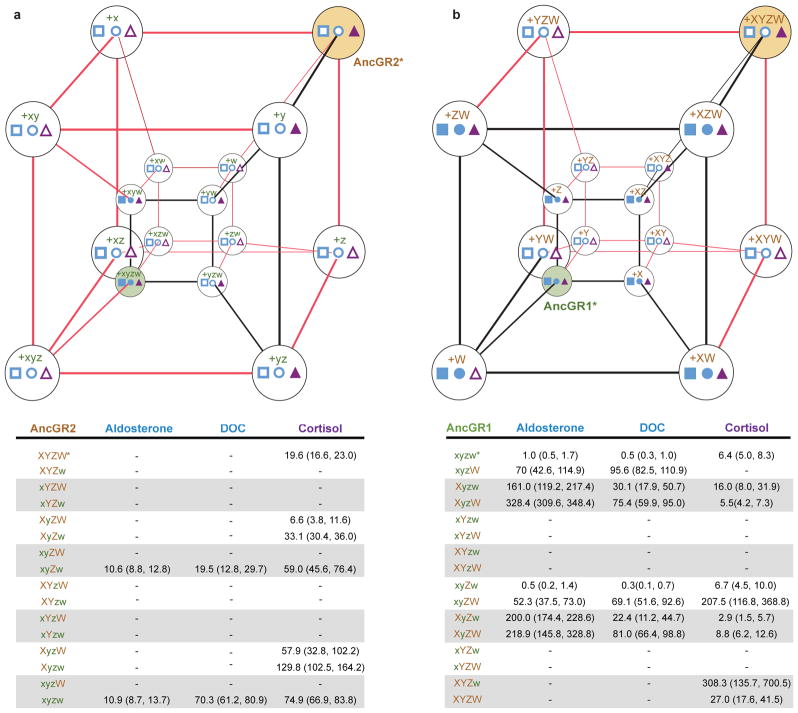Fig. 4.
Epistasis limits trajectories of reverse and forward evolution. The corners of each hypercube represent states for residue sets X, Y, Z, and W. Edges show pathways between the derived (XYZW) and ancestral (xyzw) states. Red edges show unlikely evolutionary paths through nonfunctional intermediates; black paths pass through functional intermediates. Filled shapes at vertices indicate sensitivity to aldosterone (blue squares), DOC (blue circles), and cortisol (purple triangles); empty shapes, no activation by these hormones. Tables below each cube show sensitivity to each hormone as the EC50 (concentration required for half-maximal activation), with 95% confidence interval. Dashes, no activation. Asterisks, state combinations in AncGR2 and AncGR1. a) Limited evolutionary pathways to reverse AncGR2 (bronze) to the ancestral structure and function. Mutations were introduced in the AncGR2 background. b) Functional effect of substitutions during “forward” evolution when introduced into AncGR1 (green). The sets X, Y, Z, and W contain each more than one site, so the complete sequence space for each cube has 12 dimensions, 4096 vertices, and numerous additional trajectories.

